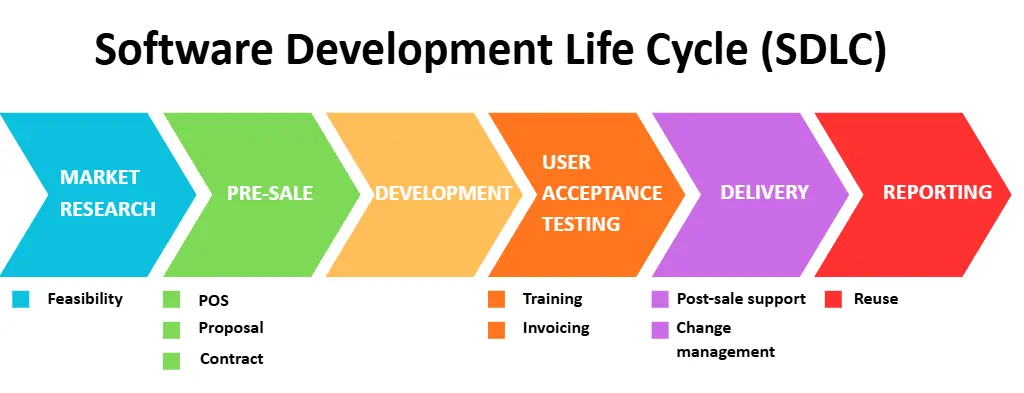
When you think of a call center, you probably picture rows of agents with headsets handling calls. But in modern business, contact center outsourcing means more than just human labor—it requires flexible technological tools. That’s why comprehensive digital solutions for process management have become absolutely crucial.
In this article, we invite you to dive into the world of contact center software development. You’ll learn about the key stages of the Software Development Life Cycle (SDLC), the tech capabilities at Global Bilgi, and real client case studies. For this conversation I spoke with Software Development Analyst Maksym Hanenko and Head of Business Development Specialist Bohdan Lysenko, who share their insider comments and technical details.
Why Software is Key to Contact Center Outsourcing
Generic, off-the-shelf solutions often fail to meet all of a business’s unique needs. They handle basic tasks fine, but their effectiveness quickly drops when dealing with unique business processes or high customer service standards.
That’s precisely why Global Bilgi established its own IT product development unit. We create solutions tailored to each client’s specific needs, integrating seamlessly into their business model. Central to this approach is Sirius, our cloud-based contact center platform that combines technology, analytics, and flexibility.
Our goal is simple: to give clients more than just a contact center. We offer a full ecosystem of digital tools for business, from WFM (Workforce Management) and quality control to business process automation and deep analytics. This approach allows clients not only to optimize their daily operations but also to elevate their customer service to a fundamentally new level.
How We Build Contact Center Software
Every Global Bilgi IT product is created using the principles of the Software Development Life Cycle (SDLC). This is a structured process that covers the entire development path: from the initial idea all the way to the eventual reuse of completed solutions.
The core phases of our SDLC are:
- Market Research / Feasibility: Analyzing the market and the technical viability of the idea.
- Pre-sale / POC / Proposal / Contract: Concept development, creating prototypes (Proof of Concept), and finalizing details with the client.
- Development: The actual creation of the product.
- UAT / Training / Invoicing: User acceptance testing, staff training, and final sign-off.
- Delivery / Post-sale support / Change Management: Solution deployment, ongoing support, and managing necessary changes.
- Reporting / Reuse: Analytics, results assessment, and repurposing developed modules for new projects.

To maintain flexibility and react swiftly to client needs, we operate using the Agile/SCRUM methodology. Development is divided into short sprints, each including testing and a release. The client is involved at every stage, which guarantees a transparent process and a predictable outcome.
 Maksym Hanenko, Global Bilgi’s Software Development Analyst, comments:
Maksym Hanenko, Global Bilgi’s Software Development Analyst, comments:
“Agile lets us break down large projects or complex software into smaller, more manageable pieces. We create demo versions, and later, even open demos for use and assessment by both the client and the end-users. This is vital, because no matter how professional the Business Analyst (BA), Developer (Dev), or Quality Assurance specialist (QA) might be, only the customer and the user can confirm: ‘Yes, this is exactly what we need.’ It’s better to hear that feedback immediately than at the end of development.
At Global Bilgi, we always adapt the Agile approach to the specific project: we take into account both the company’s internal needs and the client’s requirements. This allows us to remain flexible while maintaining a high standard of quality.”
The Technology Backbone
In developing its software solutions, Global Bilgi relies on modern and proven technological stacks: Java, .NET, and PHP. This approach ensures we create products that combine scalability, security, and the ability to seamlessly integrate with other core business systems.
Today, the company’s portfolio includes 14 solutions built on Java, 24 products on .NET (17 internal and 8 custom-built for specific outsourcing projects), and 3 PHP products. Each stack is deployed for distinct tasks, collectively forming a comprehensive ecosystem of digital tools for contact centers.
Maksym Hanenko, Global Bilgi’s Software Development Analyst, explains the breakdown:
“To put it simply: Java is our ‘foundation.’ It’s responsible for the core applications that a contact center simply cannot function without. This includes telephony and related software.
In contrast, .NET solutions are what we call ‘quality of life improvements’—tools designed to make agents’ daily work more comfortable and efficient. For instance, we have a WFM application where agents can swap shifts, and the system tracks and controls those processes.
Another example is AQoS (Assurance Quality of Service): users can review or listen to their calls and chats, while QA specialists and Team Leads (TLs) leave evaluations. As a result, the agent sees feedback in a user-friendly format and can immediately refine their skills.”
Contact Center Software Development Case Studies
Our clients include leading companies across diverse sectors—from the telecommunications business and automakers to FMCG companies and logistics services. Each one has its own specific way of handling customer interactions, demanding unique approaches and solutions.
At Global Bilgi, we understand these differences and build software products that help ensure stability, efficiency, and flawless customer service. That’s why we don’t limit ourselves to off-the-shelf templates. Instead, we offer customized IT solutions that factor in the client’s real-world business processes.
Our experts shared details on several of those cases:
Case 1: Developing the All-in-One Interface CRM
Maksym Hanenko explains:
“For one of our projects, the need arose to create a Unified Workspace CRM system. Its main goal was to unify all the client’s databases within one interface, allowing agents to work with information quickly and easily without having to open dozens of extra files and tabs.
The ‘single-pane’ CRM is a solution that vastly simplifies the agent’s work, providing access to all necessary information in a single application or web interface. This approach eliminates the chaotic workflow involving scattered Excel files, Word documents, and other disparate sources.
We developed the Technical Specification, calculated the time, and estimated the cost. Ultimately, the project remained at the Proof of Concept (PoC) stage. The primary reasons were a longer-than-expected development process and the cost of implementation. Despite this, the case demonstrated the promise of the ‘single-pane’ approach and its potential for significantly boosting contact center efficiency.”
Recommended Reading: Adapting Contact Center Software to Client Needs: The Case of Toyota Ukraine
Case 2: Building IVR Trees with a Drag-and-Drop Interface
Maksym Hanenko explains:
“The idea emerged as a response to a common problem: most companies were tired of manually scripting scenarios in complex systems like Asterisk. This demanded deep technical knowledge, consumed a lot of time, and complicated quick changes.
Our new solution introduced the ability to build IVR menus using a drag-and-drop format. Users simply drag blocks onto the screen and connect them. The system includes pre-set menu options and standard transitions, which dramatically accelerates the setup process.
This type of interface can also be utilized for building chatbots, as the underlying logic is quite similar. This means a company gains a single, universal tool for communications automation.
Another key advantage is the client’s independence from technical support. While previous changes to an IVR or chatbot required contacting specialists, now all it takes is a quick demonstration and documentation. After that, clients can manage everything themselves: creating, editing, and adapting scenarios to meet their business needs.”
Case 3: Implementing Face Recognition via Video Call
 Bohdan Lysenko, Head of Business Development Specialist, recounts:
Bohdan Lysenko, Head of Business Development Specialist, recounts:
“One of Global Bilgi’s important developments was creating a solution for client identification via video call. This technology is especially relevant for companies in the financial and banking sectors, as well as FMCG, which must comply with strict personal verification requirements during online communications.
The main challenge for this project was ensuring stable, two-way, real-time video communication between the customer and the contact center agent. Our developers accounted for not just the video quality, but also technical aspects like minimal latency, the absence of glitches, and the ability to save video recordings within the system for later review.
Using technologies like this directly boosts customer trust and allows companies to meet regulatory requirements. However, demand for such solutions is usually initiated by the clients themselves—in situations where remote client identification is necessary or mandated by law.
Currently, the product exists as a demo version, ready to launch upon a client’s request. Global Bilgi plans to expand this area in the future, as video verification is a critical element of the digital transformation of customer services, particularly in security-critical fields.”
Case 4: Developing a CRM System for Mobile Sales Teams with FMC Support
Bohdan Lysenko recounts:
“This project originated from a tender by one of our partners who was looking for a solution to automate the work of their highly mobile sales managers. The goal was to create a CRM system integrated with mobile telephony via FMC (Fixed Mobile Convergence) to ensure complete synchronization of all communications.
FMC integration unlocks several immediate business capabilities. First, it establishes a single point of call accounting the CRM captures the entire communication history, regardless of whether the manager called from a mobile or landline phone. Second, the system automatically recognizes the client’s number and pulls up their card during the call. This is both convenient and speeds up the workflow.
FMC also enables working ‘on the go,’ allowing a manager to call clients from their mobile phone while the client sees the company’s corporate number. Furthermore, the system records all conversations, which enhances quality control and aids analytics. Ultimately, sales teams gain more freedom and mobility, while management gets comprehensive call analytics directly in the CRM: duration, volume, effectiveness, and conversion rate. This fundamentally simplifies performance evaluation and decision-making.
Today, FMC integration into the Sirius platform is already a ready-made solution that Global Bilgi offers its clients. As for the full-fledged CRM system for mobile teams, it remains at the concept stage, ready to be realized upon specific customer request.”
You May Also Be Interested In: B2B Software Sales for Customer Experience Management: The Global Bilgi Experience
Case 5: AI-Powered Automated Transcription and Quality Scoring
Bohdan Lysenko recounts:
“One of our clients is a major multinational corporation in the FMCG sector. For this specific project, we implemented a solution that combines automated call transcription (converting voice to text) with conversation quality scoring using Artificial Intelligence (AI).
The main objective was to reduce the workload on quality assessment specialists and increase control accuracy. Where quality evaluation was previously done manually, the system now automates the process. The AI analyzes conversation content, tonality, adherence to scripts, and key customer interaction metrics. This saves the team time, reduces errors, and significantly boosts the objectivity of results.
Naturally, while AI performs its task effectively, it still requires continuous training and supervision from specialists to ensure that the analysis accuracy remains consistently high.
Today, this solution is successfully working in production in collaboration with a partner company. We continue to improve it, as we see great potential in this area for all of our clients.”
Conclusion
Today, Global Bilgi is about more than just service outsourcing. It’s also a team of experts creating contact center software geared toward solving real-world business challenges.
Thanks to the experience of our experts, like Maksym Hanenko and Bohdan Lysenko, we develop solutions that unite technology, analytics, and practical value for the client.
Our products help businesses operate faster, control quality, and deliver an exceptional customer experience. That is precisely why a technological approach has become an inseparable part of Global Bilgi’s DNA.



